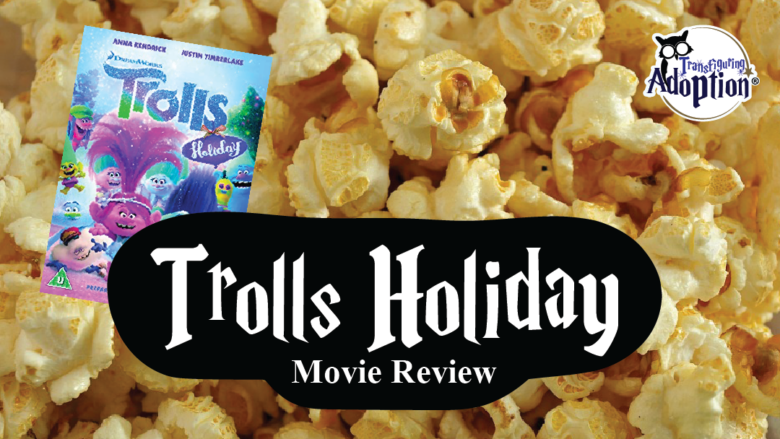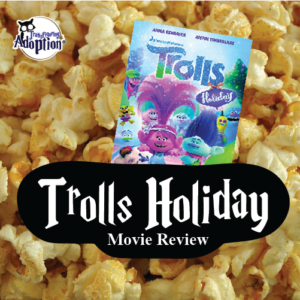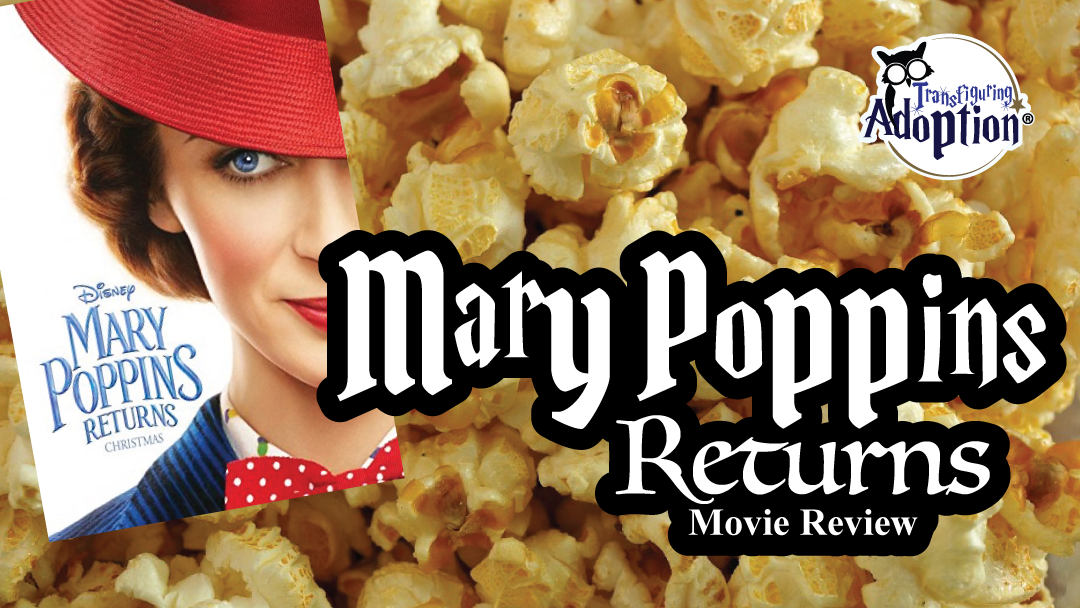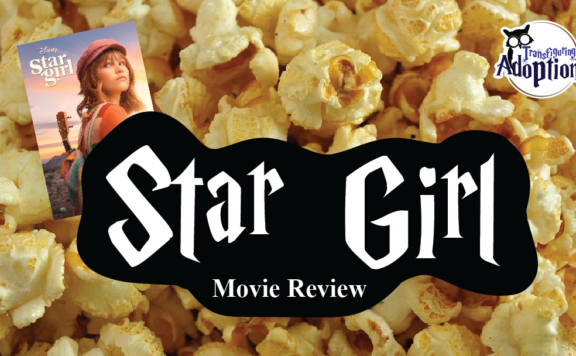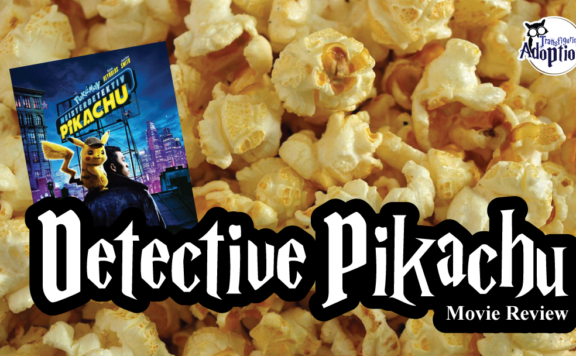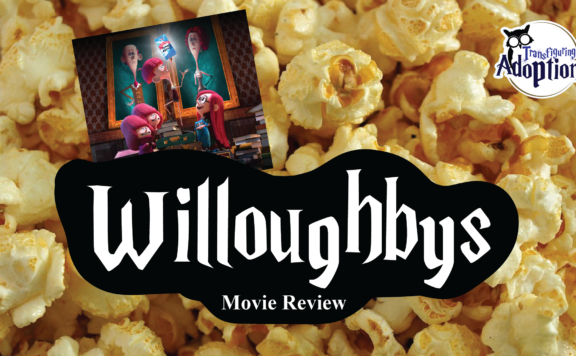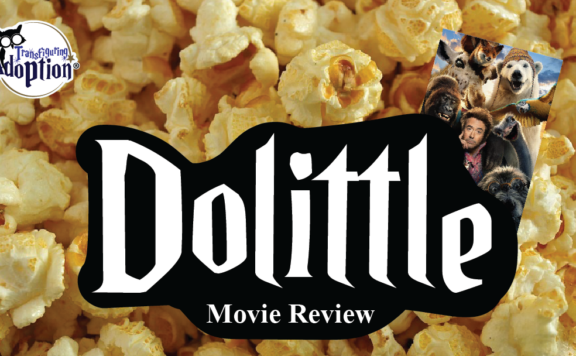Grade:
Transfiguring Adoption awarded this movie 4 Hoots out of 5 based on how useful it will be for a foster/adoptive family. [Learn more about our Hoot grading system here]
Movie Info:
Rating: Y-7/PG
Genre: Animation, Short, Comedy
Runtime: 26 minutes
Studio: DreamWorks Animation
From the Cover of Trolls Holiday by DreamWorks Animation:
“When the Queen of the Trolls, Poppy, finds out that the Bergens do not have holidays, she enlists help from her friends, Branch and the Snack Pack, to help her bring holidays to the Bergens.”
Transfiguring Adoption’s Overview:
Trolls Holiday is a fun short-film that features Poppy (Anna Kendrick), Branch (Chance the Rapper) and the rest of the gang children know and love from the recent franchise films. The target audience appears to be children age 7 and up. It also appears this movie would be best for any family to enjoy together!
** Spoilers Could Be Ahead **
How Is This Relevant To Adoption & Foster Care?
Children who have been through trauma, much like the Bergens, find a new normal when they come into the child welfare system, foster care, or an adoptive home. Because of these transitions children often lose a sense of identity that comes from cultural components, such as holidays. Some families may be able to help provide outlets for these aspects of culture but across the board there is an adjustment time where the entire family finds new traditions to share and make their own, merging their child’s past to the family’s present. For this reason, Trolls Holiday is a wonderful entertainment piece that can create a teachable moment to give your child the vocabulary to voice their cultural needs to their caregiver (you) and others.
Discussion Points:
- Cultural Identity
Children who have been through trauma and removed from the family of origin find themselves in quite the tailspin, whether it be immediately after placement or even 30 years after they were adopted and have grown into adults with their own family. It is very important for a caregiver to remember that, even in the joyous occasion of an adoption, where a child is separated from their family of origin there is heartbreak. The little things we take for granted like knowing how to make a Pumpkin Roll that won’t crack or Great Grandma’s Crawfish Étouffée, how play Rook, and knowing that Dad’s side of the family has a history of coronary heart challenges are all pieces of knowledge that for me have been discussed at length and have become an access to my ancestry. Children who have been removed for a temporary removal or adoption may feel lost when asked how their family celebrates Advent Season, much like the Bergens in a post-Trollstice world. With this short film children can gain some vocabulary to advocate for cultural needs, like Bridget, and caregivers a reminder of how to accept holiday feedback, like Queen Poppy. - Healthy Communication and Conflict
Imagine that you are walking in the woods… when you come across a bear! Your heart beats fast and you must decide to fight the bear or run. I would run, as I am certainly not in bear-fighting shape. Once away from the bear you know, logically, that you are safe and begin to calm down. Now, imagine that you are a child from the welfare system and every adult is a bear. Yikes! This may seem like an exaggeration, but your child’s brain has been hijacked by its stress response system so much that even conflict as small as being told “no” can feel like a bear has entered the room. For this reason, a lot of children will come out fighting (i.e. – defiance, aggression, cursing, etc.) or fleeing (i.e. – running away, disassociating, etc. It is important for a caregiver to remember that a child who has endured trauma most likely will lack the communication skills to express want and need and the caregiver will need to help calm a child before learning a new skill. And with the skill building will come lots and lots of practice. This will require time, patience, and lots of compassion for the children in your home while they learn new communication skills lost from years of underdevelopment and trauma.
Cautionary Points:
- Vehicles Running Off Course/Wrecking
On their way to meet up with the Bergens, the Trolls run off course in a bus-like vehicle and nearly wreck. They also land in a “wormhole”. While many kids will laugh at the gags some children may be triggered if they or a loved one has suffered from a wreck. Children also may be a little freaked out by the “wormhole”, which I’m addressing next. - Weird, Creepy Realism Scene
Hopefully this will fly over most kids’ heads, but while in the “wormhole” the characters experience a split in reality that results in some trippy imagery and then the characters in a hyper-realistic look, complete with original trolls dolls in all their creepy glory. Some kids may find this triggering if exposed to substances that can induce such splits in reality or have diagnoses that struggle with reality. This may also just creep a kid out. It’s not super bad but it’s a bit unsettling. - Inappropriate Use of Food
While pitching holiday ideas to the Bergens, one of the Trolls overstuffs their mouth with marshmallows in a way that, while comical, could be a choking hazard. This usually would be harmless, but to a child who is developmentally delayed or has poor impulse control they may try to mimic this game. Chubby Bunny is a fun group game, but only under the supervision of a caring, responsible adult and children should be advised of this. - Unintentional Harm to Friends
As the Trolls continue to pitch various holiday ideas King Gristle is subjected to glitter and lasers in his eyes, being electrocuted, and other pieces. This likely will be accepted as a gag but may trigger children who have suffered harm from loved ones with related abuses. - Inappropriate Activities for Children
One of the Troll’s ideas is “Tickle Day”, which is not a great concept for a child who has potentially suffered sexual abuse. Tickle games are often used as a first step towards grooming a child for sexual abuse, so tickling/touching someone without consent should not be encouraged with most children from the child welfare system. There is also an idea for “Tattoo Day” where a character is shown getting a tattoo on the lower back with the butt crack visible. This is also an activity we discourage minors from mimicking as well. - Character Nudity – Blurred/Implied
Another idea the Trolls present is “Rip Off Pants Day” where a Troll rips off his pants. There is a blurred-censor bar over the lower half of his body, but this is another example of an activity that may trigger a child who has endured sexual abuse trauma. - Runaway Behavior
After arguing with Bridget, Queen Poppy runs away from her friends and hides in the forest. Children who have a history of runaway behavior may find this problematic as this may be a survival behavior that children may struggle with in response to stress. - Use of Pipe
Okay, it’s just a bubble pipe so for most kids this is probably not an issue. However, children from the child welfare system may have been exposed to things that children you have raised from birth have not. It’s advised to keep an eye on this one in case a child begins to mimic the use of drug paraphernalia they have witnessed in the past.
Discussion Guide:
- Who is your favorite character? What character are you most like?
Caregiver Note: This is an opening question that will help ease you and your child into more difficult topics. Children who have endured trauma may struggle to connect concepts in movies to real life and need help to make these connections. In the same way children often struggle to connect feelings to behavior to themselves and others but seeing a character work through such issues can help the child make these connections and give the language to express this. - Why was Bridget sad when she and King Gristle received the holiday cards from the Trolls? Why did she just take pictures with days of the week?
Caregiver Note: When Bridget received all these fun, beautiful pictures of the Trolls having fun she struggled with the feeling of missing out (“FOMO” for those who are slang-savvy). She didn’t have a holiday card to reciprocate with and I’m sure Bridget didn’t send cards out for Trollstice when it existed so this tradition is very foreign to Bridget… but she still wants to feel included! Children from the child welfare system or are separated from family of origin may feel this as well. They may not know unspoken rule that everyone cheats at Rook on Thanksgiving. They haven’t been taught how to make cookies from scratch. They may not have done Christmas gifts like yours either… but they want to feel a part of what happening and feel less “other.” For this reason many kids may feel like Bridget, wanting to connect, or like King Gristle who is frustrated with what appears to be meaningless pageantry. - Why did it not help the Bergens to just take a holiday from the Trolls?
Caregiver Note: At this point in the Trolls-universe the Bergens have been through a significant amount of cultural shifting in a relatively short amount of time. While Trollstice was not very neighborly this was the only holiday this cultural group maintained. When the Trolls ran away in the original movie this caused much grief for the loss of this tradition and the joy experienced. After befriending the Trolls the Bergens realized that this tradition was harmful to their new friends and that joy could be found in other ways… but this meant the cultural piece had been severed from this entire culture. Children who have endured trauma may have a very different culture from your own. This can, of course, include language expression, ethnicity, food, holidays, and child rearing but it can also include generational abuses, substance abuse exposure, neglect, and domestic violence exposure. Just handing a child a new tradition and expecting them to completely understand the meanings of this tradition and the value is much like the experience of the Trolls trying to give the Bergens a holiday. It feels forced, uncomfortable, and confusing. While children absolutely want to belong and experience joy and bonding with your family, only recognizing your own culture in the home will only isolate your child emotionally from the rest of the family. This is why it’s important to try to incorporate values pieces of your child’s culture and to create new traditions unique to your new family. - ACTIVITY: Gotcha Day Planning!
Caregiver Note: Gotcha Day is a day that can be celebrated whether it’s the day your child came to your home or was legally adopted into your family. Give your child the ropes in planning out a Gotcha Day holiday unique to your child and family Queen Poppy style – with a scrapbook! Grab some magazines, glue sticks, child-appropriate scissors, markers, confetti/glitter, and other creative materials to create a Gotcha Day scrapbook with at least 3 steps for the perfect day to celebrate as a family. Allow your child to pick out a favorite dinner or dessert to mark the day or even a fun activity. One family I know has the tradition of birthday icing faces that they did with their adoptees for years. It was such a big tradition I was even sent icing face pictures for my own birthday. Those kids have grown now but this created lots of fun memories for those children and their family. And feel free to call this celebration whatever you like… it’s your new tradition to design any way you like! - Why was Bridget afraid to tell Queen Poppy she and King Gristle did not like the holidays the Trolls wanted to share?
Caregiver Note: Children who have endured trauma often lack the communication skills and vocabulary to express how they feel and what they want. This can result in either shutting down, as Bridget did at first, or with outbursts of pent up rage and leaving a caregiver confused. “Why weren’t they grateful???” …. Right? Sometimes adults get so excited about bonding with a child they may forget that the child may need help making gains in these developmental areas and require some detective work to figure out what your child is really feeling and how to best respond. It’s easy to say that Bridget should not have blown up at Queen Poppy, but Queen Poppy throughout each Trolls installment continually struggles to listen to her friends and probably could have seen Bridget and King Gristle’s discomfort had she really listened sooner. - Have you ever felt like Bridget and been afraid to tell someone you are uncomfortable or dislike something? What did you do?
Caregiver Note: Children who have endured trauma may react in various, seemingly unhelpful ways to dislike or discomfort. They may shy away further into themselves, afraid to anger or disappoint someone they love. They may also come out fighting with aggression and defiance to create space when they feel unsafe. These are examples of survival behaviors, which are ordinary responses to extraordinary circumstances. It’s important to remember that the same behaviors that kept that child alive throughout the traumatic circumstances they endured without a caring, supportive caregiver. This is a great opportunity to help your child connect their feelings to behavior much like we did with Bridget and Queen Poppy. - How could Queen Poppy have better responded to Bridget’s feelings?
Caregiver Note: This is a great opportunity for you to get some insight on how to best comfort your child when they are ready for fight or flight. Discuss different strategies that Queen Poppy could have used like listening to Bridget’s tone and body language, remembering that Bridget may not communicate like a Troll, being patient, using kind words, using calm tones, or using “I” statements to discuss conflict without blaming. - ACTIVITY: Selfie Squad
Caregiver Note: Grab some props and a camera and take some pictures together. Use some of the fun pictures the Trolls have as examples of themes and faces you and your family can make. Take turns with who is the photographer and enjoy time to laugh together. At the end print off each participant’s favorite picture for their Life Book. Remember, pictures don’t have to be just for holidays. Memories are built with the little things and interactions in life and, like the Bergens, need to have some documentation too.
